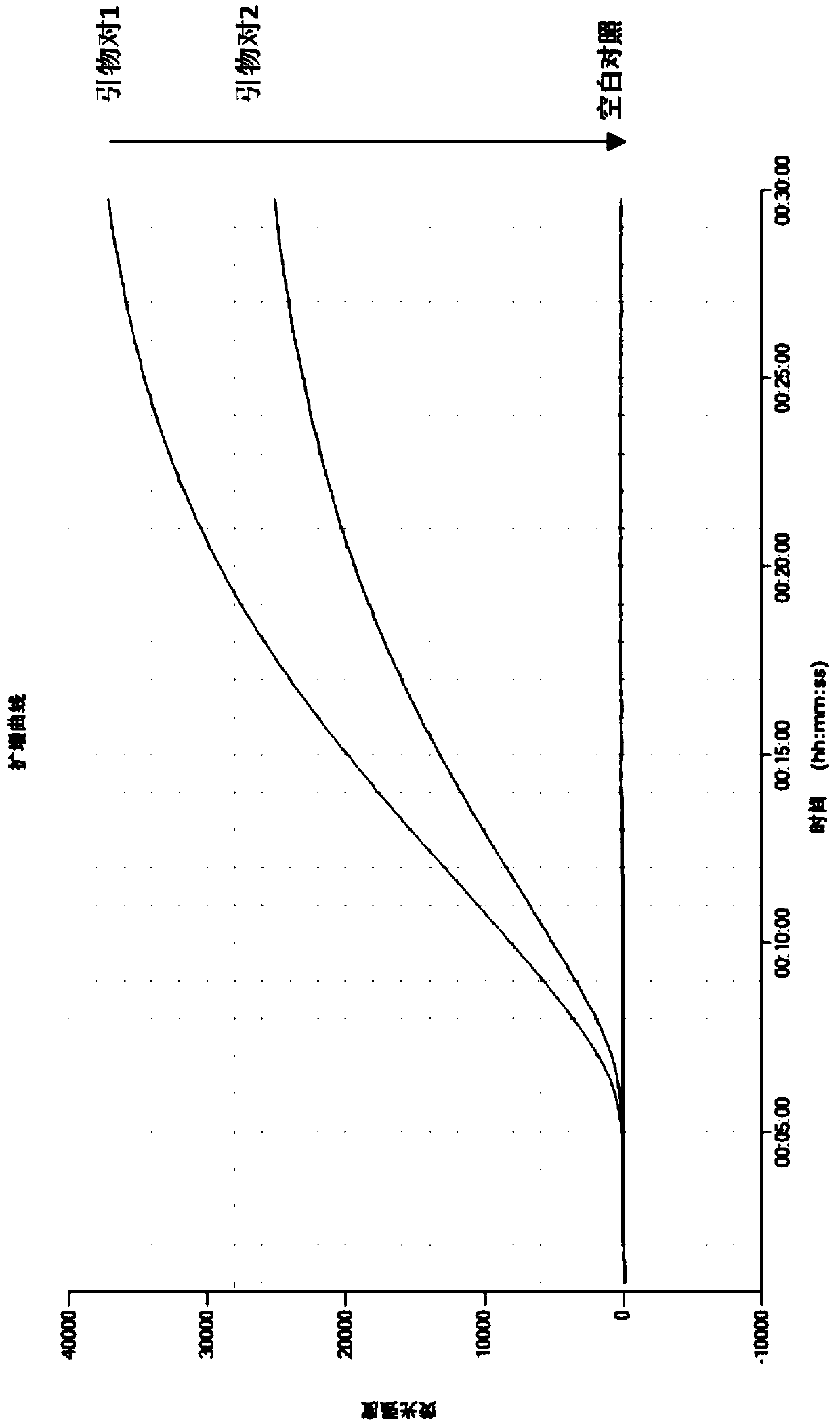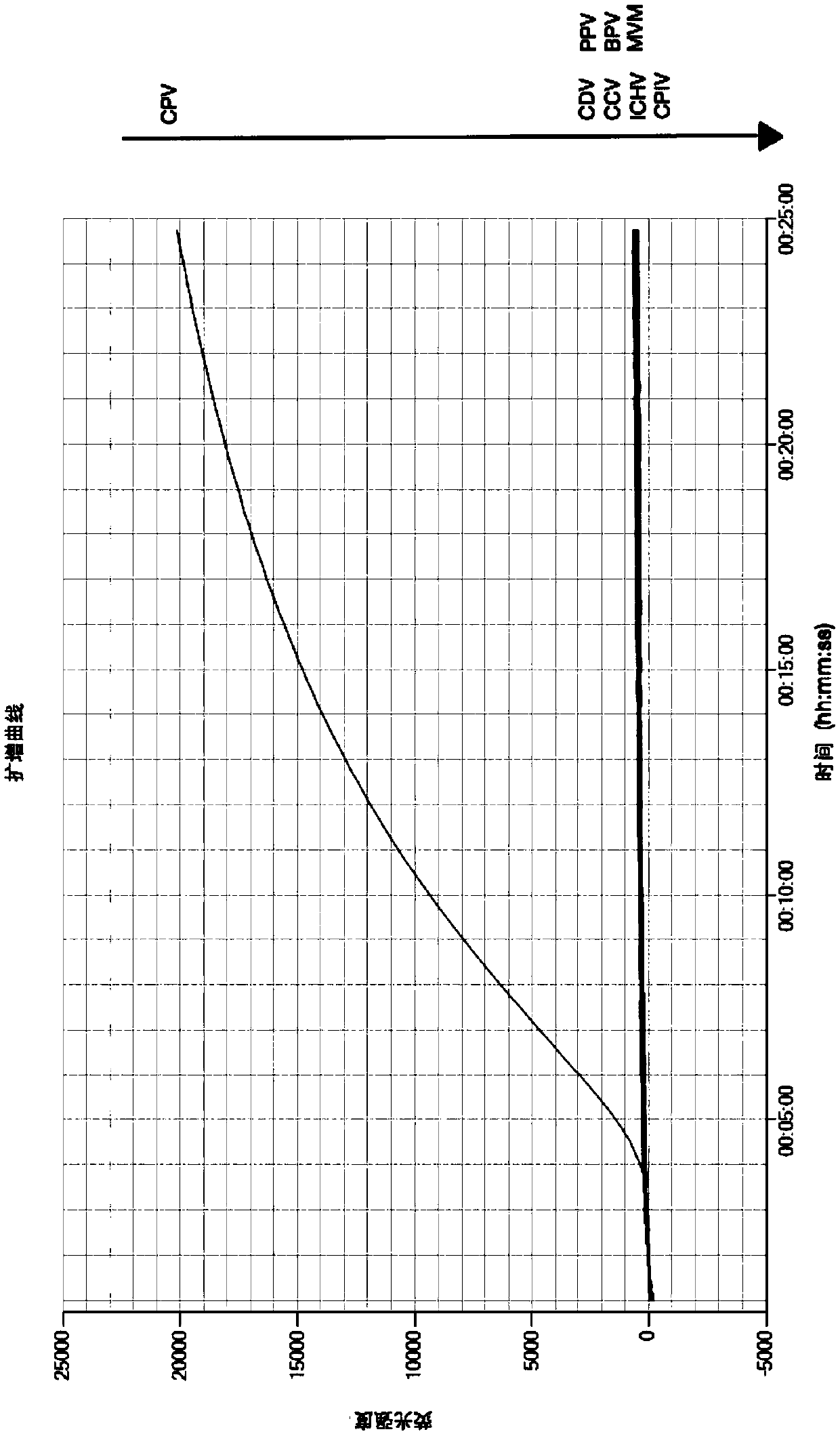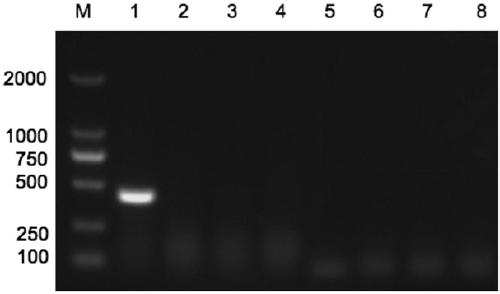Kit, RPA primer pair, probe and method for detecting CPV nucleic acid
A primer-probe and primer pair technology, applied in biochemical equipment and methods, DNA/RNA fragments, recombinant DNA technology, etc., can solve the problems of long reaction time, low sensitivity and sensitivity, and achieve fast detection speed The effect of low equipment requirements and accurate detection methods
- Summary
- Abstract
- Description
- Claims
- Application Information
AI Technical Summary
Problems solved by technology
Method used
Image
Examples
Embodiment 1
[0041] The design of embodiment 1 real-time fluorescent PRA primer and probe
[0042] The conserved sequence of VP2 protein gene of CPV isolated from different countries and regions was analyzed by Vector NTI Suite software, and RPA primers and probes were designed by Primer Express software. Primers and probes were synthesized by Shanghai Huirui Biotechnology Co., Ltd.
[0043] Table 1 Primer pairs and probe combinations
[0044]
[0045] Among them, the nucleotide sequence composition of CPVP1 is shown as: 5'SEQ ID NO.3+FAM-dt+THF+BHQ1-dt+SEQ IDNO.4+C3Spacer 3'; the nucleotide sequence composition of CPVP2 is: 5 'SEQ ID NO.7+FAM-dt+THF+BHQ1-dt+SEQ ID NO.8+C3Spacer 3'.
Embodiment 2
[0046] The establishment and optimization of embodiment 2 reaction system
[0047] 1. Real-time fluorescent RPA detection
[0048] The reaction system is 50 μL: 25 μL 2-fold reaction buffer, 7.2 μL dNTP with an initial concentration of 11 mM, 5 μL 10-fold probe enzyme mixture, 2.1 μL each of upstream and downstream primers (CPVF, CPVR) (the initial concentration is 10 μM), the initial concentration 0.6 μL of 10 μM fluorescent probe; after mixing, add 2.5 μL of 20-fold core reaction solution, 1 μL of 50-fold RT reaction solution, and 1 μL of 50-fold Exo reaction solution; after mixing, add 2.5 μL at the end with an initial concentration of 280 mM Magnesium acetate, 1 μL nucleic acid solution to be tested. The reaction conditions are: incubate at 39°C for 25 minutes. After the reaction, check the fluorescence amplification curve and judge the result.
[0049] 2. Screening of optimal primer pairs and probe combinations
[0050] According to the above reaction system, the same...
Embodiment 3
[0064] Embodiment 3PCR detects
[0065] The PCR primers were designed for the capsid protein (VP2) gene of CPV. The size of the amplified gene fragment was 441 bp. The sequence of the upstream primer (CPVF) was: 5'ATCACAGCAAACTCAAGCAGAC3', and the sequence of the downstream primer (CPVR) was: 5'TGGAGTTGGTATGGTTGGTTTC3'. In a PCR thin-walled tube, add 1 μL of DNA template, 2.5 μL of 10-fold Taq enzyme concentration buffer, 0.5 μL of dNTP, 0.25 μL of upstream and downstream primers, 0.25 μL of Taq enzyme, and add water to make up the total volume to 25 μL. Put the PCR tube on the PCR machine, and amplify according to the following procedure: first, 94°C for 3min; then 94°C for 15s, 55°C for 15s, 72°C for 30s, 35 cycles; finally, 72°C for 3min. PCR products were analyzed by gel imaging system after agarose gel electrophoresis.
PUM
 Login to View More
Login to View More Abstract
Description
Claims
Application Information
 Login to View More
Login to View More - R&D
- Intellectual Property
- Life Sciences
- Materials
- Tech Scout
- Unparalleled Data Quality
- Higher Quality Content
- 60% Fewer Hallucinations
Browse by: Latest US Patents, China's latest patents, Technical Efficacy Thesaurus, Application Domain, Technology Topic, Popular Technical Reports.
© 2025 PatSnap. All rights reserved.Legal|Privacy policy|Modern Slavery Act Transparency Statement|Sitemap|About US| Contact US: help@patsnap.com



